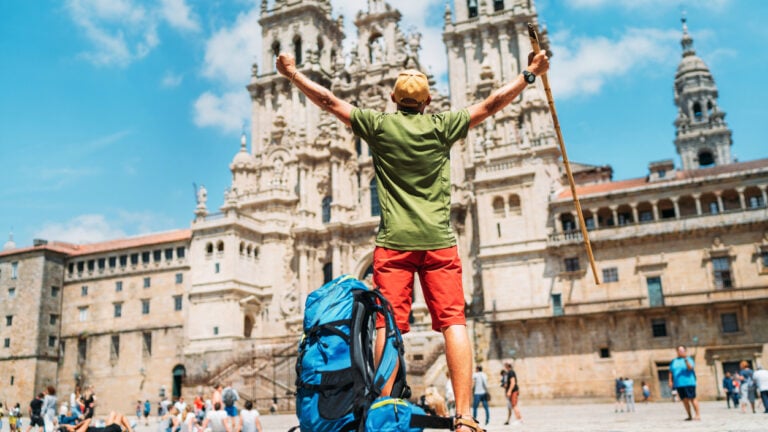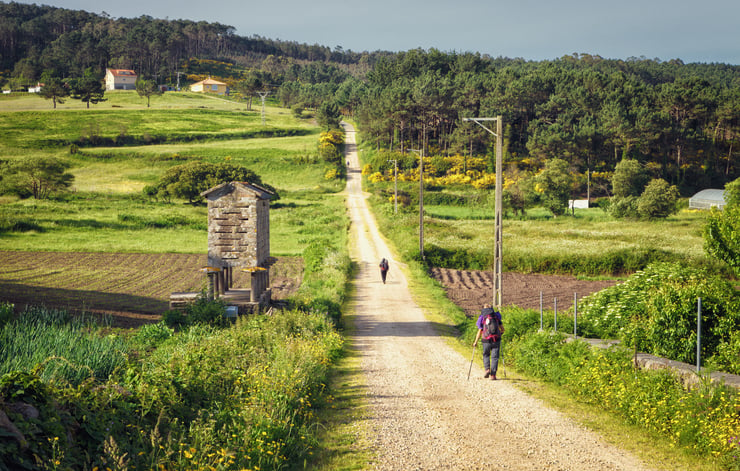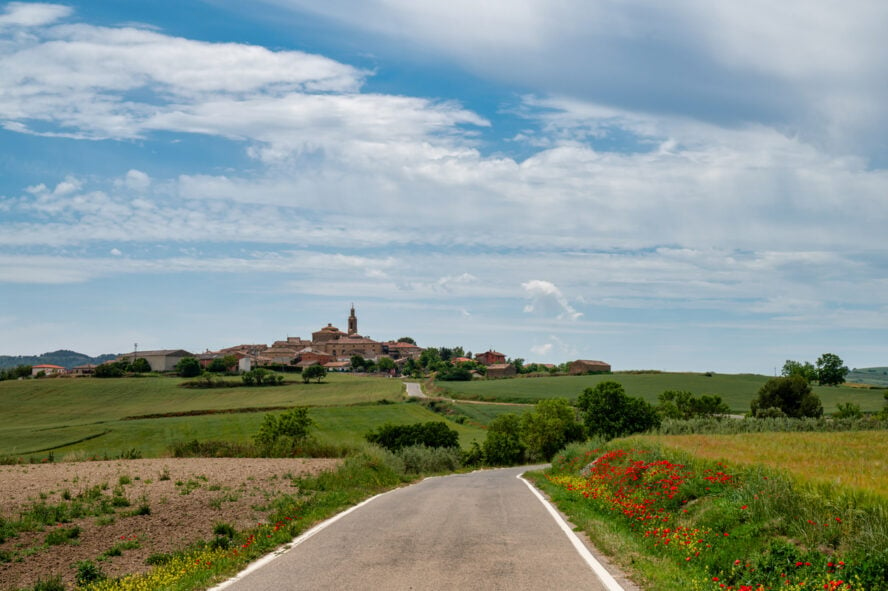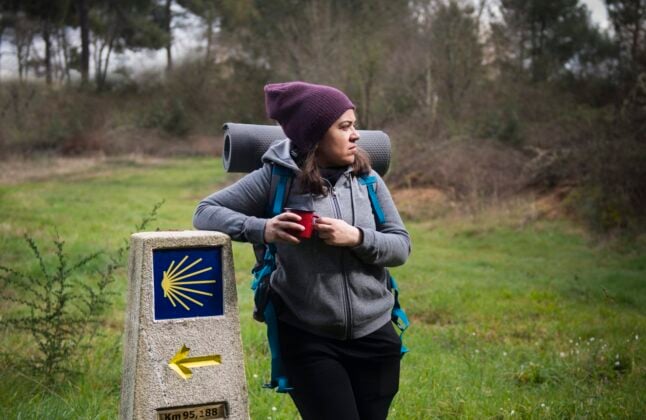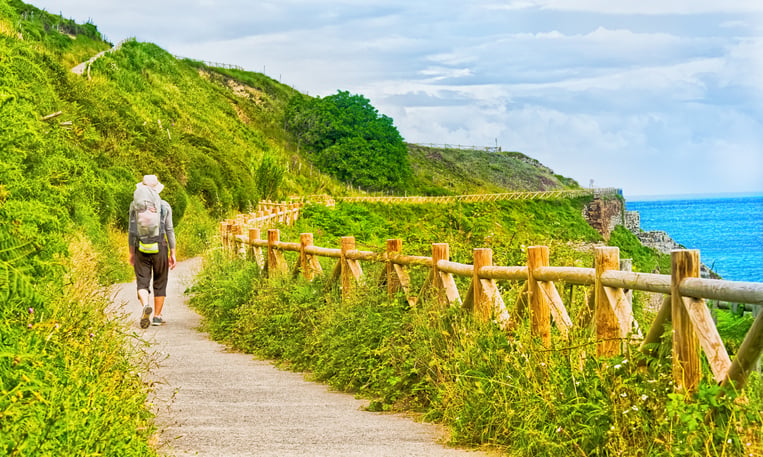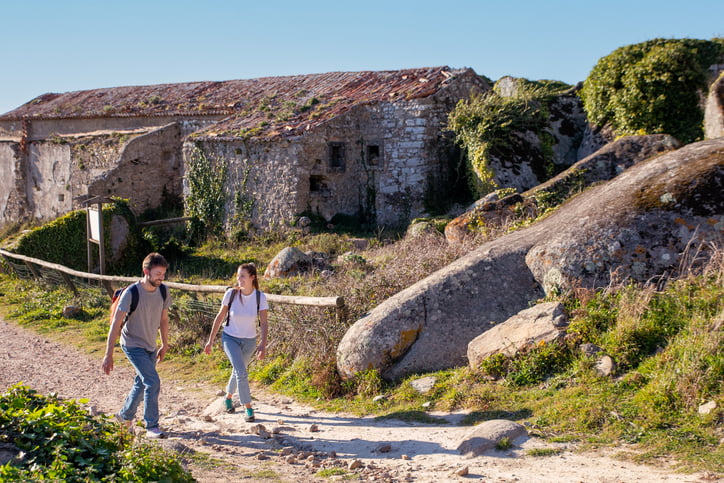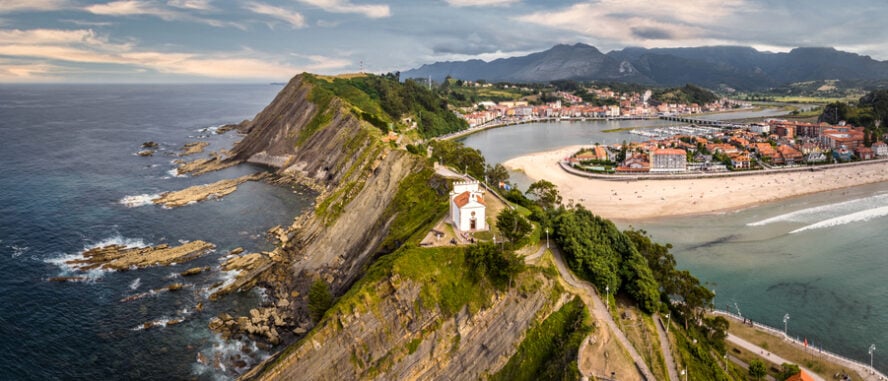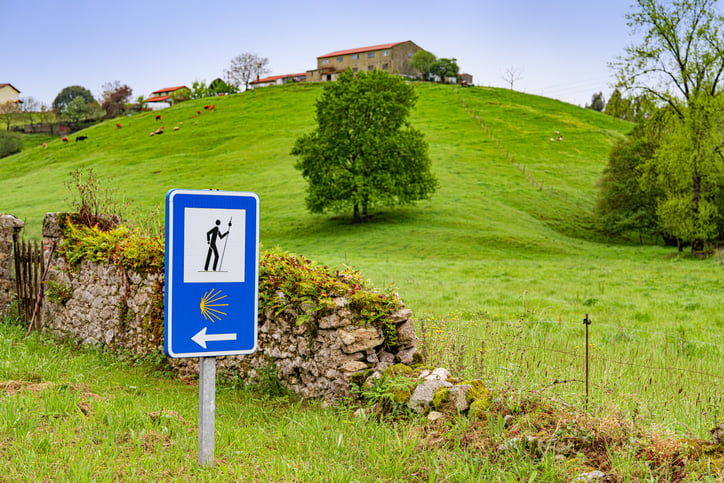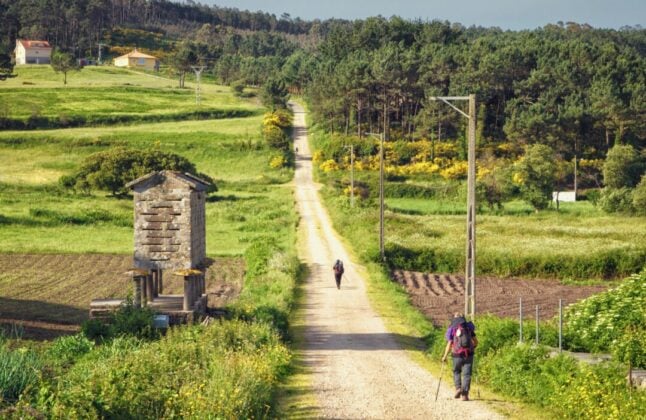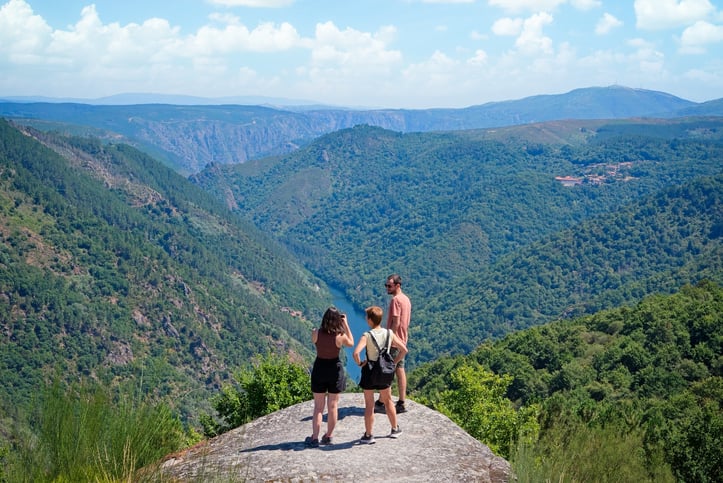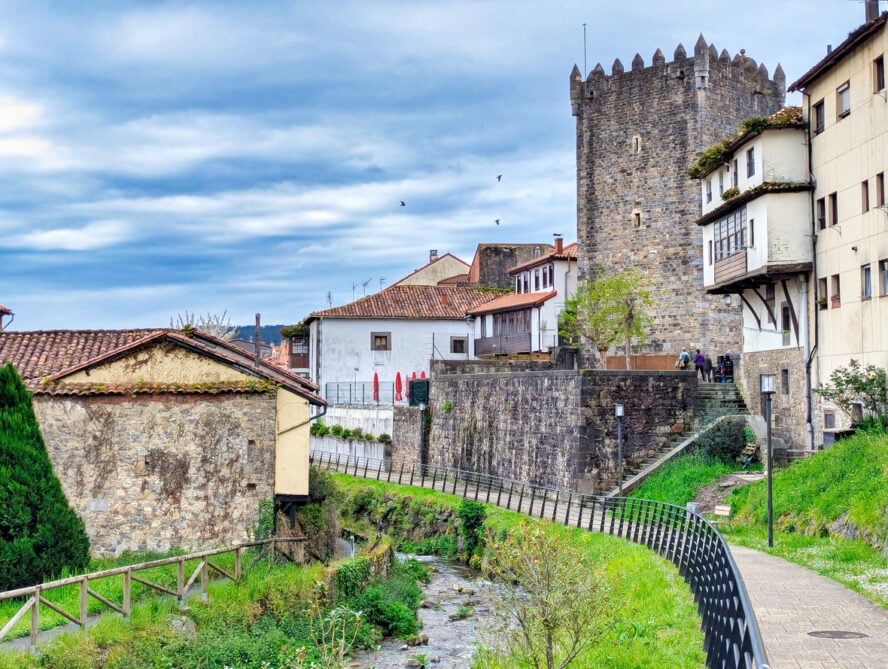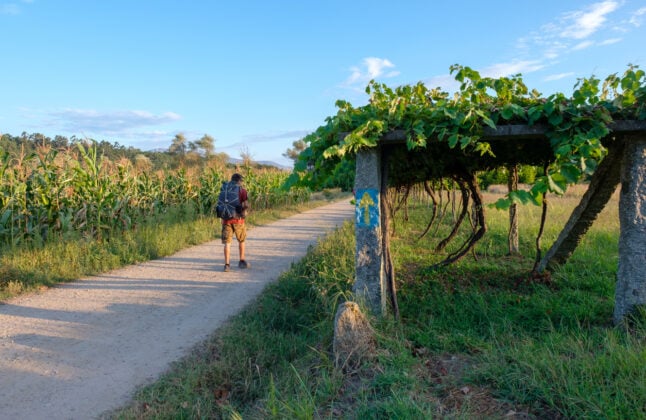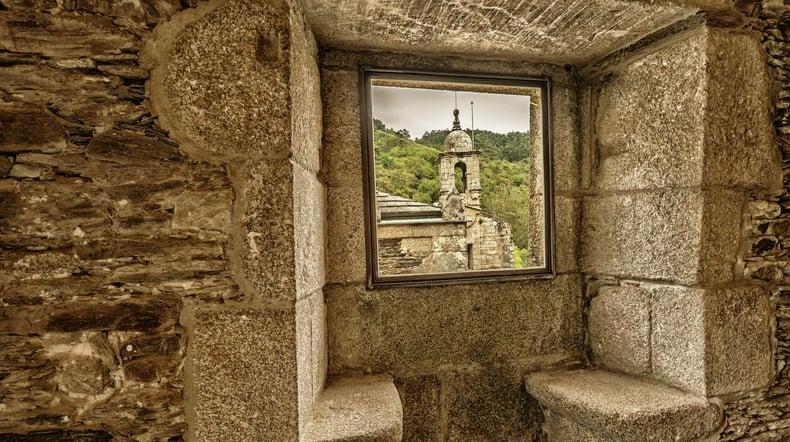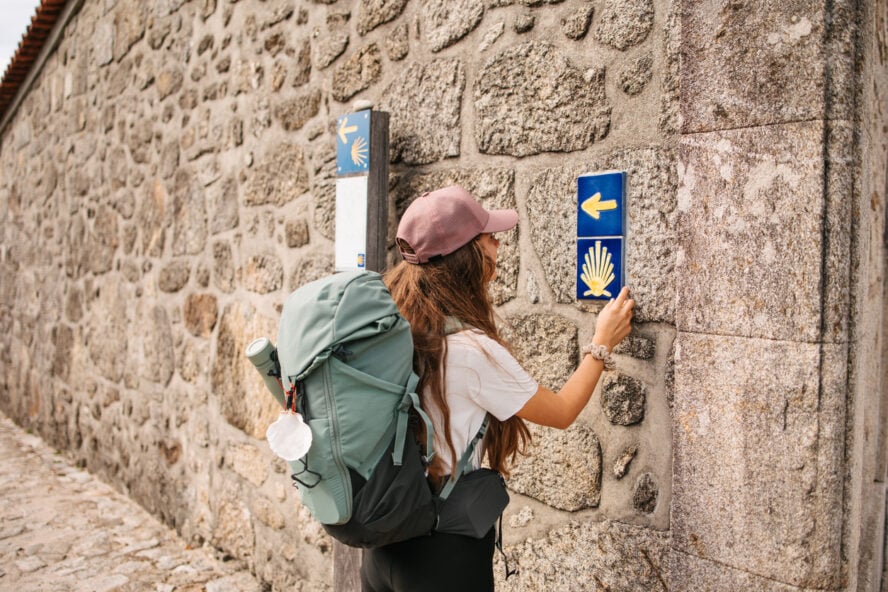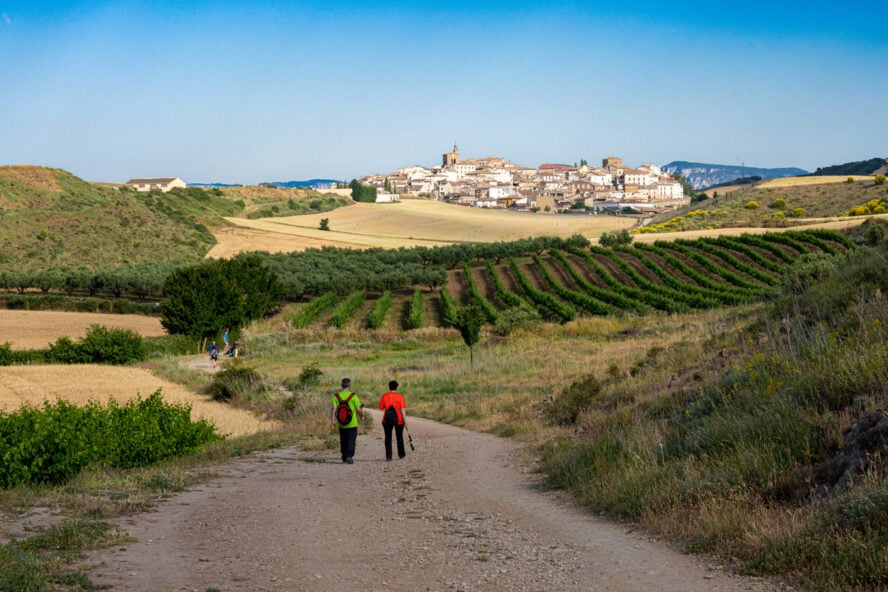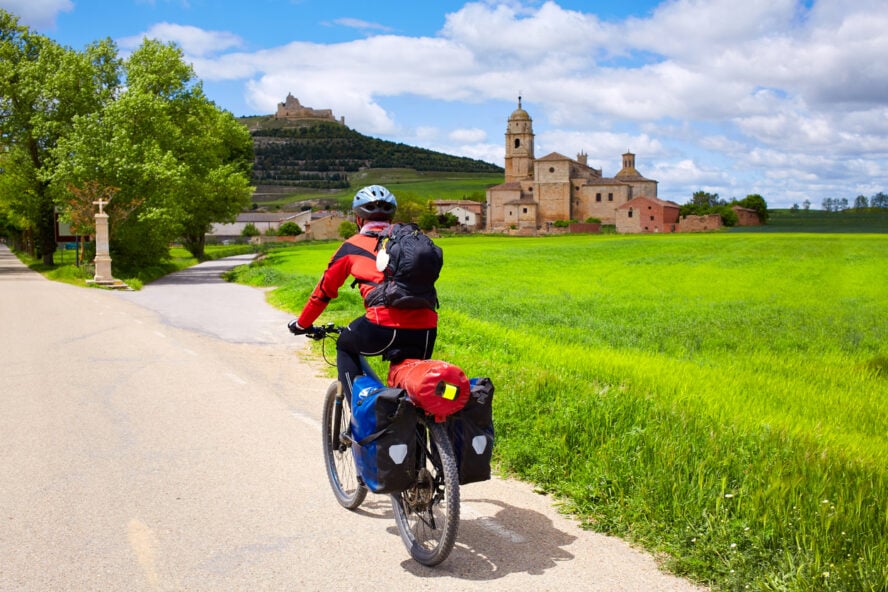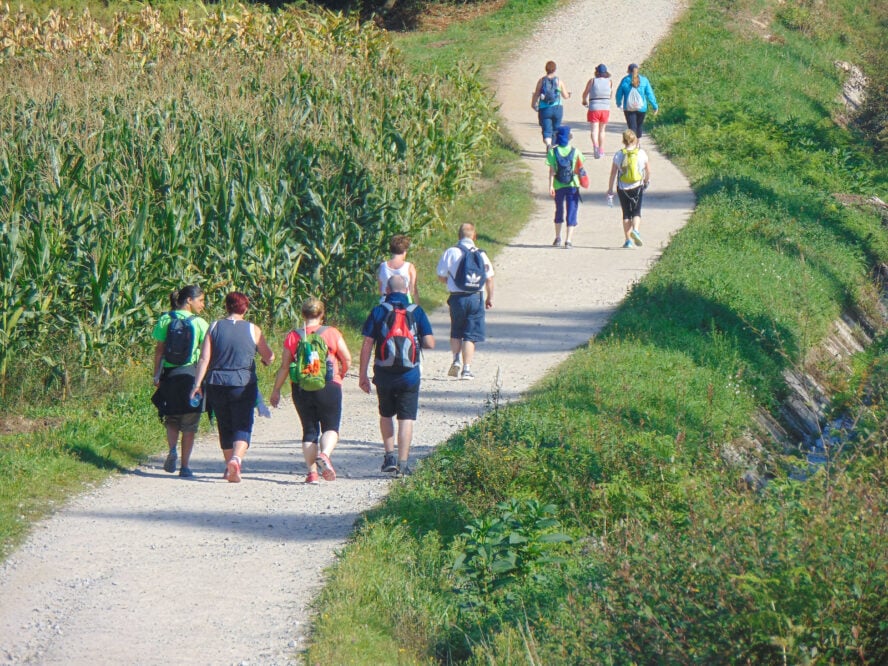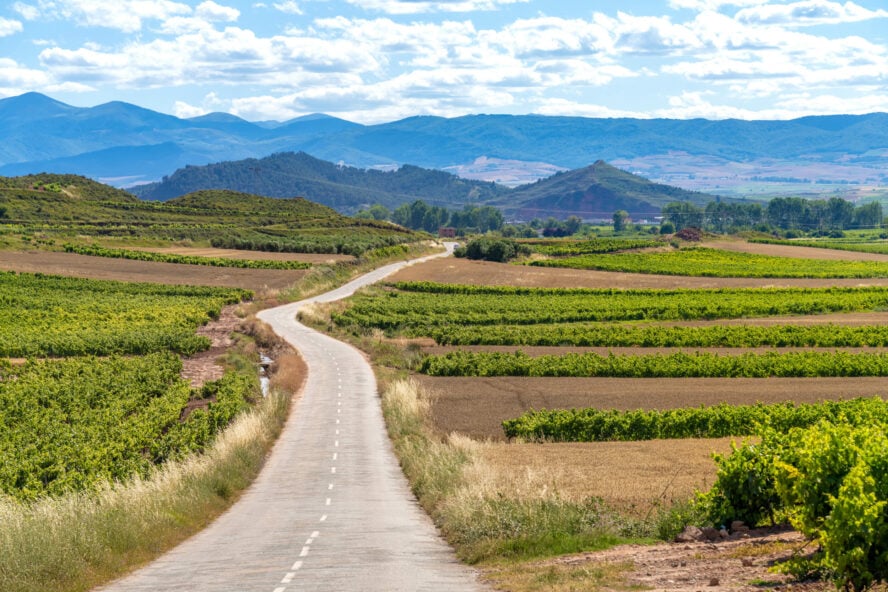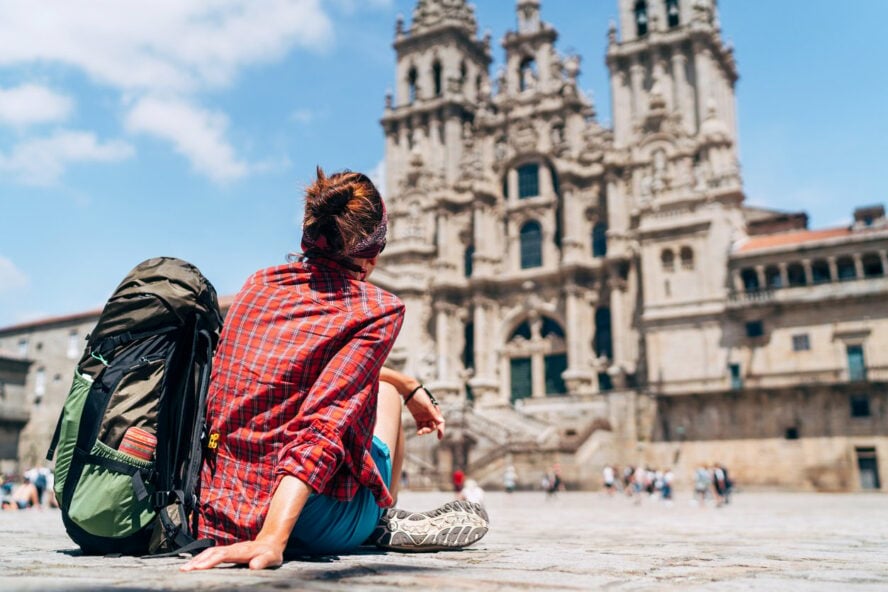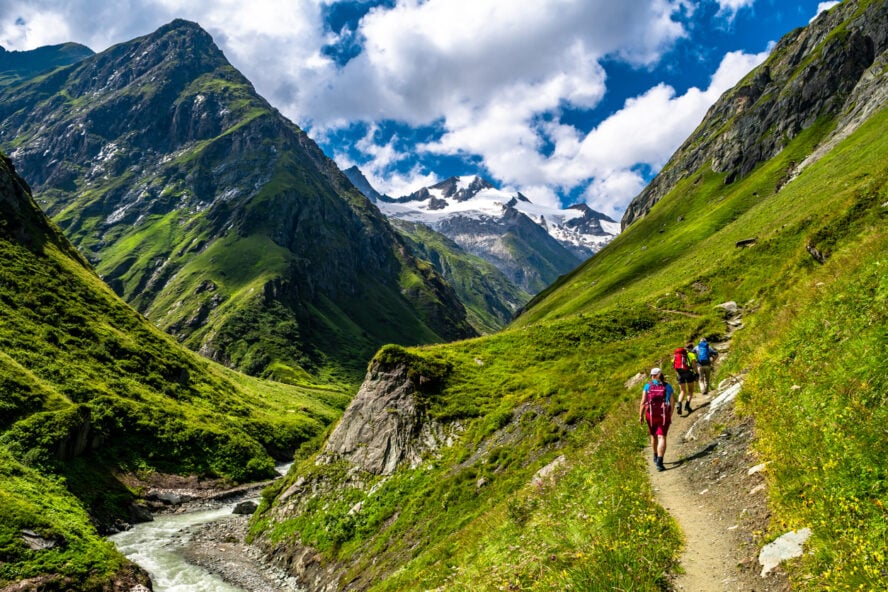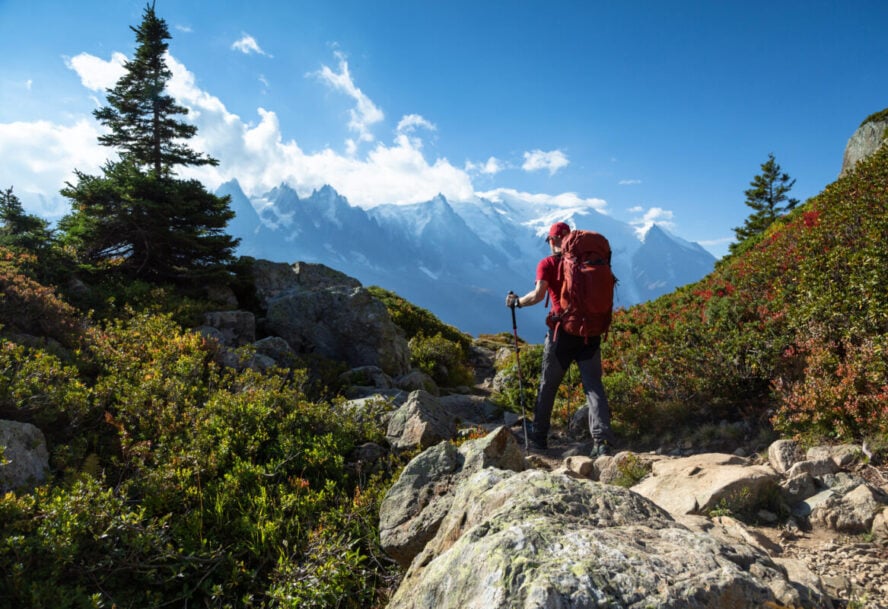You’re trudging through rolling hills, scallop shell swinging from your backpack.
The sun warms your face. Thousand-year-old castles dot the horizon. A sense of purpose fills your every step.
The Camino de Santiago routes are more than just hikes—they are journeys of the soul.
What is the Camino de Santiago?
Often called “The Way of St. James,” the Camino de Santiago is a network of ancient pilgrimage routes. The routes wind all over Europe, all leading to the sacred shrine of St. James in Santiago de Compostela, Spain.
For over a thousand years, pilgrims have walked these trails, driven by faith, adventure, or a quest for personal growth. Legend holds that St. James, one of Jesus’ apostles, is buried in the cathedral. This story made the hike into a spiritual beacon since the 9th century.
Today, the Camino de Santiago is a global phenomenon. It draws over 400,000 hikers, cyclists, and soul-searchers every year who spend weeks upon weeks trekking through medieval villages, rolling hills, and stunning coastlines.
Want to learn more about the Camino Santiago from a local guide? Watch this webinar!
Why You Should Hike the Camino de Santiago
Hiking one of the Camino de Santiago routes is a transformative experience that blends physical challenge with cultural immersion.
You’ll wander through medieval villages, share stories with fellow pilgrims, and savor local cuisine like Galician octopus or Rioja wine.
Each route offers a unique take on the Camino, from rugged coastlines to misty mountains and pastoral valleys. With the abundance of options, the Camino is a great first thru-hike for folks of all age groups & fitness levels.
Perhaps most importantly, the Camino de Santiago is a chance to unplug, reflect, and connect with history—pilgrims have walked these routes since the 9th century! Whether you’re seeking spiritual growth, a physical feat, or simply a break from routine, the Camino is just the journey you’ve been looking for.
Camino de Santiago Routes: Everything You Need to Know
We could wax poetic about the Camino for paragraphs on end, but enough romanticizing. Let’s get into what makes each Camino de Santiago route special – and how to find the perfect one for you!
1. Camino Frances
The Camino Frances, or French Way, is the rockstar of Camino de Santiago routes, drawing over 60% of total pilgrims due to its vibrant mix of history, culture, and scenery.
Starting in Saint-Jean-Pied-de-Port, a charming French village at the foot of the Pyrenees, it stretches across northern Spain to Santiago de Compostela.
This Camino de Santiago route follows ancient paths through iconic cities like Pamplona, Burgos, and León. The trail passes vineyards, rolling plains, and mountain passes.
It’s well-marked, with plenty of albergues (pilgrim hostels) and cafes. This makes it ideal for first-timers or those craving a more social vibe. Expect to meet fellow hikers from around the world sharing stories over tapas after a day’s trek.
Who is the Camino Frances for?
The Camino Frances is perfect for beginners and social butterflies.
Due to its excellent infrastructure, with frequent accommodations and dining options, the Camino Frances is easiest to plan, as well as accessible for all fitness levels. If you’re looking to make friends, soak up Spain’s cultural highlights, or follow the path featured in films like Emilio Estevez’s The Way, this is your route.
It’s also great for those who want flexibility— you can walk the full route or just the final 100 km to earn the Compostela certificate.
How long is the Camino Frances?
The full Camino Frances spans 780 km (485 miles) and typically takes 30-35 days to complete, averaging 20-25 km per day.
For those short on time, the final 100 km from Sarria to Santiago is a popular option, taking about 5-8 days. This shorter section still qualifies you for the Compostela and offers a taste of the route’s charm, with lush Galician countryside and plenty of camaraderie.
What are the Camino Frances Stages?
The Camino Frances is divided into 33 stages, each roughly 20-25 km, though you can adjust based on your pace. Key stages include:
- Stage 1: Saint-Jean-Pied-de-Port to Roncesvalles (26 km) – A challenging climb over the Pyrenees.
- Stage 7: Logroño to Nájera (29 km) – Vineyards and Rioja wine country.
- Stage 20: Frómista to Carrión de los Condes (19 km) – Flat Meseta plains for reflection.
- Stage 27: Rabanal del Camino to Ponferrada (32 km) – Mountainous terrain and the Templar Castle.
- Stage 31: Sarria to Portomarín (22 km) – The popular final 100 km begins here. With 57hours, our guides provide detailed stage planning, ensuring you rest in comfortable lodgings each night.
What Scenery Can I Expect on the Camino Frances?
Expect a visual feast: the rugged Pyrenees, golden wheat fields of the Meseta, and Galicia’s emerald forests.
You’ll pass historic Roman bridges, Gothic cathedrals in Burgos and León, and quaint villages like O Cebreiro with its thatched-roof homes.
The route blends urban vibrancy with rural serenity–it offers something new every day. Sunsets over rolling hills and misty mornings in the mountains add a magical touch.
4 Pro Tips for the Camino Frances
- Pack light: Aim for a 10% bodyweight backpack (6-8 kg). Essentials include comfy shoes, a lightweight sleeping bag, and quick-dry clothing.
- Train in advance: Practice walking 15-20 km daily with your pack to build stamina.
- Stay hydrated: Carry a reusable water bottle; fountains are plentiful along the route.
- Pace yourself: Take rest days in cities like Pamplona or León to explore and recover.
Camino Frances Map
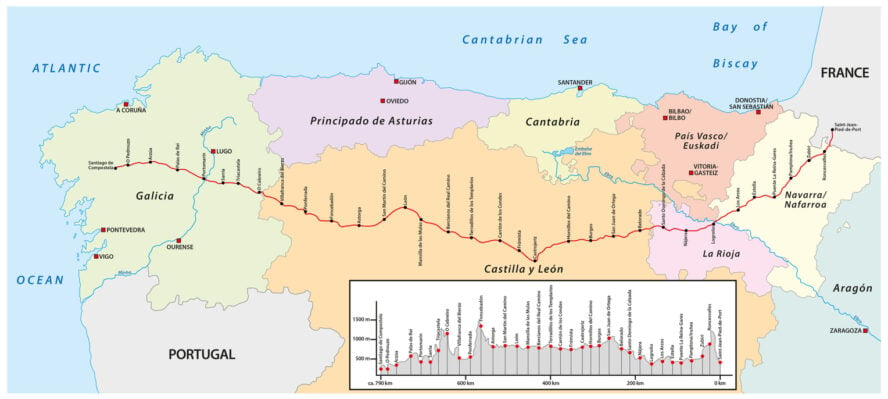
2. Camino Portugues
The Camino Portugues, the second-most-popular route, starts in Lisbon or Porto, Portugal, and winds north to Santiago de Compostela.
The route is mostly known for its flatter terrain and coastal charm. It crosses quaint seaside towns, lush forests, and the historic border town of Tui.
The Camino Portugues blends Portuguese and Spanish culture, with highlights including Porto’s colorful Ribeira district and Galicia’s seafood-rich cuisine. It’s less crowded than the Camino Frances but still offers solid infrastructure, making it a great balance of adventure and accessibility.
Why is the Camino Portugues Called the “Coastal Route”?
The Camino Portugues has two main variants: the Central Route and the Camino Portuguese Coastal Route.
The Coastal Route, starting from Porto, hugs the Atlantic Ocean. Pilgrims choose it for its stunning beach views, boardwalk strolls, and cooling sea breezes through towns like Vila do Conde and Baiona.
While the Central Route ventures inland, the Coastal Route earns its name for its scenic seaside paths. It’s especially popular in spring and summer, for obvious reasons.
Who is the Camino Portugues for?
The Camino Portugues suits those seeking a flatter, less strenuous walk with a mix of coastal and cultural vibes. It’s ideal for beginners, cyclists, or those wanting a quieter pilgrimage than the Camino Frances.
If you love seafood, beach sunsets, or Portuguese hospitality, this is the path to take. It’s also great for families or those with limited mobility.
What’s the Length of the Camino Portugues?
The full route from Lisbon is 640 km (398 miles). It takes about 28 days.
The one starting from Porto is 240-280 km (149-174 miles), depending on the variant, and takes 10-14 days.
The final 100 km from Tui to Santiago, a 5-7 day trek, is a popular choice for earning the Compostela while enjoying Galicia’s charm.
What are the Camino Portugues Stages?
The Coastal Route from Porto is typically divided into 12-14 stages, averaging 15-25 km. Key stages include:
- Stage 1: Porto to Vila do Conde (25 km) – Coastal boardwalks and sandy beaches.
- Stage 5: Viana do Castelo to Caminha (27 km) – Scenic river views and Portuguese villages.
- Stage 9: Baiona to Vigo (25 km) – Cross into Spain with ocean vistas.
- Stage 12: Redondela to Santiago (22 km) – Lush Galician countryside to the finish.
5 Pro Tips for the Camino Portugues
- Choose your variant: Coastal for sea views, Central for quieter forests and villages.
- Savor the food: Try caldo verde (Portuguese soup) and Galician pulpo a la gallega (octopus).
- Pack for rain: Spring and fall can be wet, so bring a lightweight rain jacket.
- Cycle option: The flat terrain makes this route perfect for biking.
- Start early: Beat the heat and crowds by hitting the trail at dawn.
Camino Portugues Map
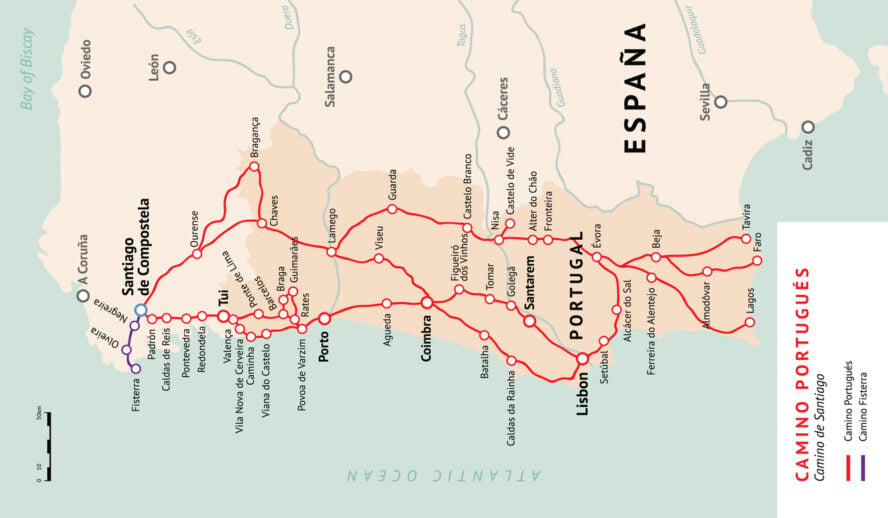
3. Camino del Norte
The Camino del Norte, or Northern Way, is another coastal gem.
It starts in Irún, near the French border, and traces Spain’s rugged northern coastline through Basque Country, Cantabria, and Asturias before heading inland to Santiago.
This Camino de Santiago route is known for its dramatic cliffs, sandy beaches, and historic towns like San Sebastián and Bilbao, It’s less crowded than the Camino Frances but more challenging due to its hilly terrain.
This route offers a perfect blend of ocean views and cultural immersion, with plenty of seafood and cider stops to enjoy.
Who is the Camino del Norte for?
This route is for hikers seeking solitude and stunning coastal scenery. It’s best for those with some hiking experience due to frequent ascents and descents.
If you love the ocean, vibrant cities, and a quieter pilgrimage, the Norte is calling. It’s also great for foodies eager to sample Basque pintxos and Asturian sidra.
How Long is the Camino del Norte?
The Camino del Norte spans 825 km (513 miles) and takes about 35-40 days to complete. Shorter sections, like the final 100 km from Ribadeo to Santiago, take 5-7 days and qualify for the Compostela.
What are the Camino del Norte Stages?
The Norte is divided into 34-36 stages, averaging 20-25 km. Highlights include:
- Stage 1: Irún to San Sebastián (24 km) – Basque coastline and pintxos galore.
- Stage 10: Santander to Santillana del Mar (27 km) – Historic villages and rolling hills.
- Stage 20: Gijón to Avilés (25 km) – Asturian coast and cider houses.
- Stage 32: Ribadeo to Lourenzá (28 km) – Entering Galicia’s greener landscapes. 57hours’ guides provide expert navigation through the route’s hilly sections and coastal detours.
4 Pro Tips for the Camino del Norte
- Train for hills: Practice hiking with elevation to prepare for this Camino de Santiago route’s ups and downs.
- Enjoy the coast: Take time to relax in San Sebastián or explore Bilbao’s Guggenheim.
- Pack layers: Coastal weather can shift from sunny to rainy quickly.
- Stay flexible: Some stages have limited albergues, so plan accommodations ahead.
Camino del Norte Map
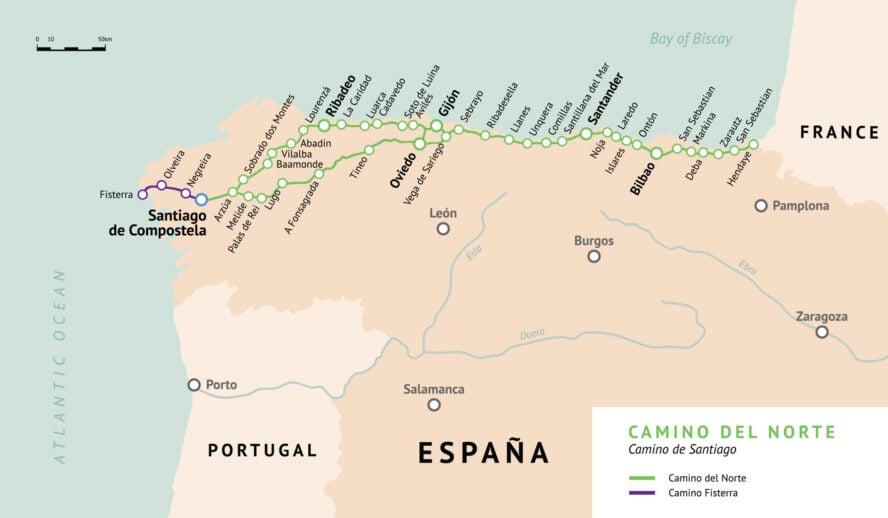
4. Camino Primitivo
The Camino Primitivo, or Original Way, is the oldest Camino route, dating back to the 9th century when King Alfonso II walked from Oviedo to Santiago.
The route starts in Oviedo, Asturias. It crosses the rugged Cantabrian Mountains and joins the Camino Frances in Melide.
Known for its challenging terrain and serene beauty, this route offers solitude and breathtaking mountain views. It’s perfect for those seeking a raw, historic pilgrimage with fewer crowds.
Who is the Camino Primitivo for?
This route is for experienced hikers craving a challenging, introspective journey.
Its steep ascents and remote paths suit self-sufficient trekkers comfortable with rugged terrain. If you love mountains, history, and a quieter Camino, the Primitivo is your match. It’s less ideal for beginners due to its physical demands, but they’ll have plenty of options anyway.
How Long is the Camino Primitivo?
The Primitivo covers 321 km (200 miles) and takes about 14-16 days, averaging 20-25 km daily.
The final 100 km from Lugo to Santiago, a 5-7 day trek, qualifies for the Compostela and offers a taste of Galicia’s lush landscapes.
What are the Camino Primitivo Stages?
The route is split into 13-14 stages, with key sections like:
- Stage 1: Oviedo to San Juan de Villapañada (30 km) – Urban start with rural charm.
- Stage 5: Tineo to Pola de Allande (26 km) – Steep mountain climbs.
- Stage 9: A Fonsagrada to O Cádavo Baleira (24 km) – Galician forests and hamlets.
- Stage 12: Lugo to San Romao da Retorta (20 km) – Gentle paths to the Camino Frances junction.
4 Pro Tips for the Camino Primitivo
- Gear up: Wear sturdy hiking boots and use trekking poles for steep descents.
- Plan for solitude: Fewer albergues mean booking ahead, especially in remote areas.
- Embrace the challenge: Train for elevation with hill workouts before your trip.
- Pack for weather: Mountain weather can be unpredictable, so bring waterproof gear.
Camino Primitivo Map
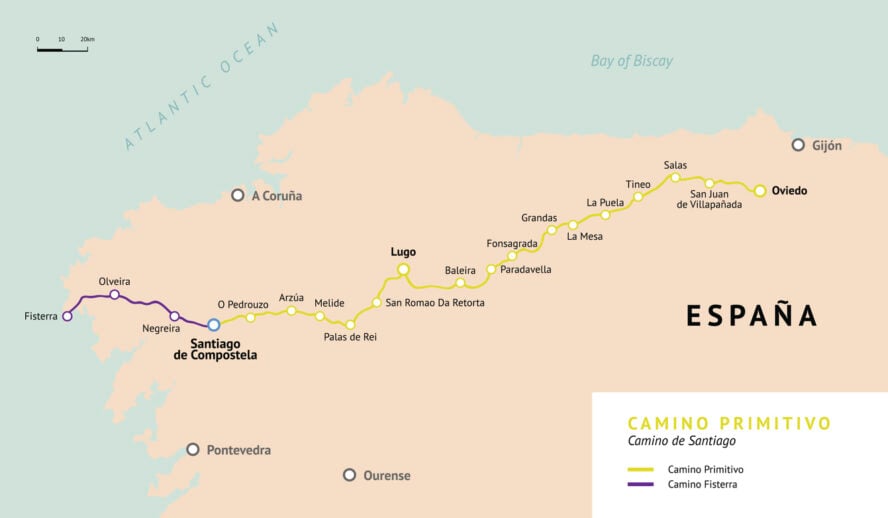
Other Famous Camino de Santiago Routes
Camino Ingles
The Camino Ingles, or English Way, stretches 120 km (75 miles) from Ferrol to Santiago, a 5-7 day trek historically used by British and Irish pilgrims who arrived by sea.
It’s perfect for those short on time, offering a mix of coastal and rural landscapes through historic towns like Pontedeume and Betanzos. The route is relatively flat, well-marked, and ideal for beginners or those seeking a quick pilgrimage.
Its growing popularity (15,000 walkers annually) ensures good infrastructure, but it remains less crowded than the Frances. Earn the Compostela with this compact, scenic route.
Camino Finisterre
The Camino Finisterre is unique, starting in Santiago and heading 90 km (56 miles) to Cape Finisterre, the “End of the World,” in 3-4 days.
Pilgrims walk through gentle Galician countryside to the rugged Atlantic coast, often extending to Muxía for its iconic seaside church.
It’s a spiritual finale made for those who’ve completed another Camino, with dramatic sunsets and the tradition of burning clothes at the lighthouse. This route suits those seeking closure or coastal beauty.
Camino Invierno
The Camino Invierno, or Winter Way, spans 260 km (162 miles) from Ponferrada to Santiago, taking 10-14 days.
Developed to avoid snowy mountain passes, it winds through the Ribeira Sacra wine region, dense forests, and charming villages. Ideal for off-season hikers seeking solitude, it offers milder winter conditions and rich history, like the Roman ruins of Las Médulas.
This quieter route is perfect for reflective pilgrims with moderate fitness.
Good-to-Know Things About the Camino de Santiago Routes
How Long Does It Take to Walk the Camino de Santiago Routes?
The time it takes to walk the Camino depends on the routes you choose and how much of it you tackle.
The Camino Frances, the most popular, spans 780 km (485 miles) and takes about 30-35 days, averaging 20-25 km daily. The Camino Portugues from Porto is shorter, at 240-280 km (149-174 miles), clocking in at 10-14 days.
For a more rugged adventure, the Camino del Norte (825 km) requires 35-40 days, while the Camino Primitivo (321 km) takes 14-16 days.
Short on time? The final 100 km of any route—like from Sarria on the Frances or Tui on the Portugues—takes 5-7 days and still earns you the Compostela certificate.
How Much Does It Cost to Walk the Camino de Santiago Routes?
The cost of walking the Camino varies based on your route, travel style, and whether you go solo or with a guided tour.
On a budget, you can manage with around $80 a day by staying in albergues (pilgrim hostels), cooking your own meals, and using local transport.
Expect to spend $250 or more daily if you’re renting a car, dining at restaurants, or booking activities like guided tours or museum visits. Accommodation ranges from $10-20 per night in albergues to $100+ for hotels or private apartments.
Add in flights to starting points like Saint-Jean-Pied-de-Port or Porto, plus gear and incidentals.
Can You Bike the Camino de Santiago Routes?
Absolutely, you can bike the Camino de Santiago, and it’s an awesome way to soak up the scenery!
Routes like the Camino Portugues, with flatter terrain, are especially cyclist-friendly. It’s a breeze for beginners to pedal from Porto to Santiago in about 5-7 days.
The Camino Frances and Camino del Norte are also bikeable, though their hilly sections demand more experience.
You’ll need a sturdy bike, ideally a hybrid or mountain bike, and a helmet is a must. Cyclists cover 40-60 km daily. This can cut your walking times in half.
Learn more about biking the Camino de Santiago in our comprehensive webinar hosted by a local guide!
How Should I Train for the Camino de Santiago?
Training for the Camino is all about building stamina and preparing your body for long days on the trail.
Start 2-3 months in advance by walking 15-20 km daily, gradually increasing distance and wearing the backpack you’ll carry (aim for 6-8 kg, 10% of your body weight).
For hillier Camino de Santiago routes like the Norte or Primitivo, practice hiking with elevation—think stair climbs or local trails with ascents.
Wear your hiking shoes to break them in and avoid blisters. Strength exercises like squats and core workouts help with stability, especially on rugged paths. If biking, log regular rides of 30-50 km.
Is the Camino de Santiago Safe?
The Camino is one of the safest long-distance trails you’ll find, with low crime rates and a welcoming pilgrim community.
Spain and Portugal’s well-marked paths and frequent albergues make navigation straightforward.
The main challenges are weather-related—think sudden rain on the Camino Portugues or foggy mountains on the Primitivo—so pack waterproof gear and check forecasts daily. On remote routes like the Primitivo or Invierno, limited facilities mean planning ahead is key.
Which Camino de Santiago Routes call your name?
The Camino de Santiago goes beyond just hiking. It’s a journey through history, culture, and self-discovery.
Pick your route based on your fitness, time, and desired scenery, and let the Camino’s magic unfold.
Ready to walk the path of pilgrims? Book your adventure and step into the Land of a Thousand Trails!

